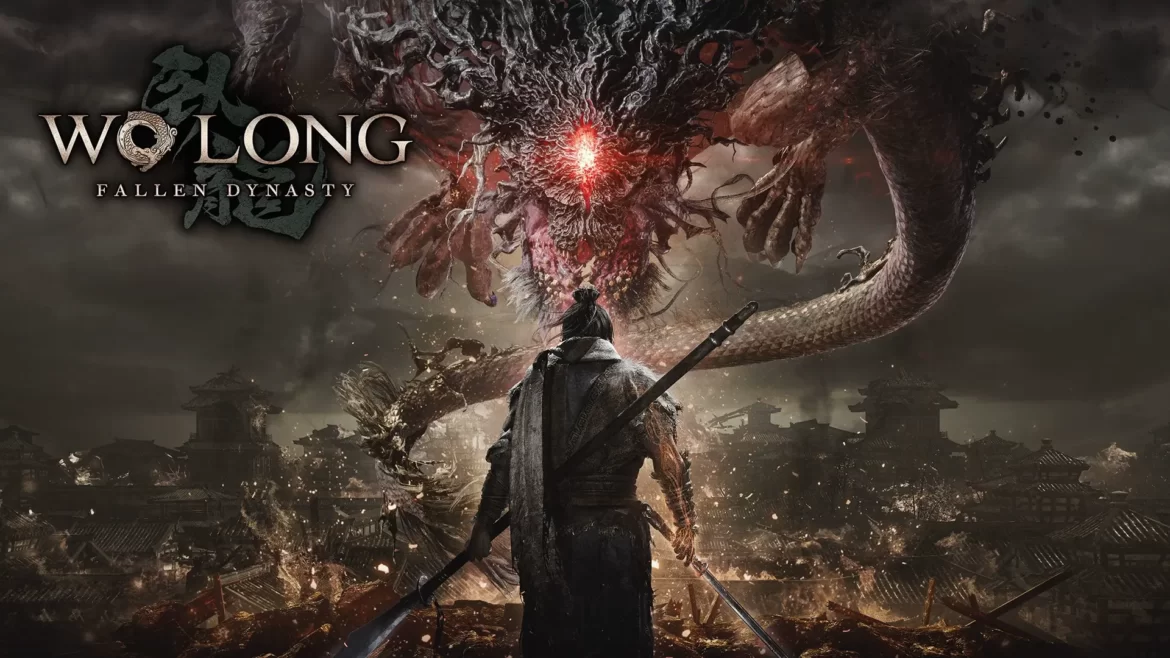Release Date : March 3, 2023
Developer(s) : Team Ninja
Publisher(s) : Koei Tecmo
Platforms : PS4, PS5, Xbox One, Xbox Series X/S, PC
It would have been easy for Team Ninja to come up with a Nioh 3 that could rely on the license’s aura, especially with Wo Long: Fallen Dynasty, which initially appears to be a new Nioh with a mustache, set in the middle of a War of the Three Kingdoms. A background often explored in our media, which makes perfect sense when adapted to the Souls-like (or Nioh-like, as you prefer) formula, even if the developer felt obliged to add a touch of dark fantasy, with demons competing against China’s greatest heroes. However, if Wo Long doesn’t manage to completely emancipate itself from the studio’s traditional formula, it does manage to impose its own style with intelligent gameplay mechanics that allow it to be something rather than another clone.
Table of Contents
Fallen Dynasty Warriors
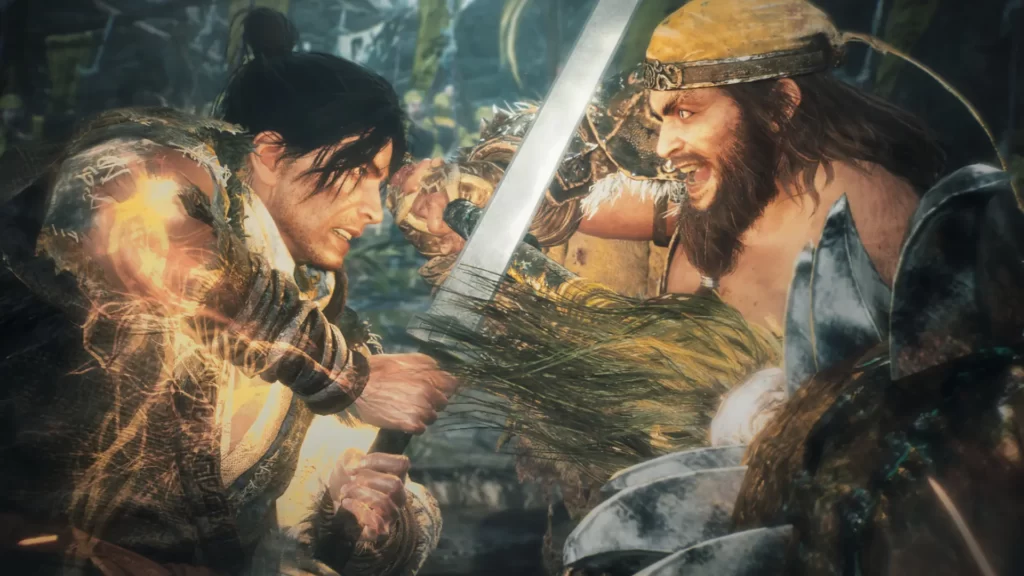
By exploring the era of the war of the Three Kingdoms in China, Wo Long: Fallen Dynasty is forced to flesh out its narrative a little more than its spiritual predecessors, in order to portray the immense gallery of historical figures who took part in this battle. An appreciable effort, even if it’s closer to a Dynasty Warriors-style narrative than Romance of the Three Kingdoms.
In these troubled times, you play the role of a militia soldier who does a little better than his colleagues, and who soon receives the blessing of several spirits to help him survive. The course of the war will take a different turn when a mysterious enemy makes Elixir available to certain camps, an enigmatic substance that increases physical abilities and turns anyone who receives it into a demon. That’s where you come in, chasing this dealer from ancient times across battlefields where you’ll come across some of the great names of that era, from Cao Cao to Liu Bei, not forgetting the terrible Lu Bu.
Not a One-Man War
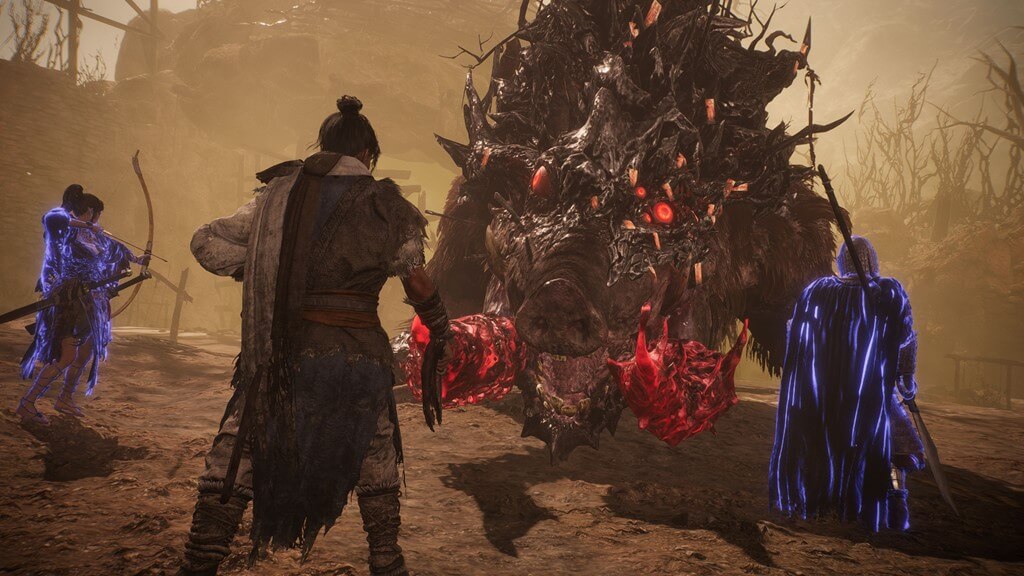
Wo Long: Fallen Dynasty makes the most of its historical context to stick you in the shoes of famous soldiers and commanders at all times. You won’t be alone much of the time, since an AI will be at your side to help you face the many challenges. This can be seen as Team Ninja’s response to the accessibility problems often pointed out by the genre’s critics, and it’s true that having one or two fighters by your side makes the experience much more… dare we use the dirty words: easier.
However, this doesn’t mean that the adventure will be a walk in the park, especially if you don’t have the experience from other similar games. In fact, the game may have shot itself in the foot with its latest demo, which introduces the adventure’s first boss and sets up a somewhat inappropriate first wall of difficulty. The bosses you’ll encounter later on will seem easier in comparison, and it’s a shame that the tutorial doesn’t help you integrate certain mechanics more smoothly, even though you’re here for the pain (ok?).
For those looking for a bit of a challenge, don’t worry, big difficulty spikes will quickly add to the challenge, with a couple of bosses still haunting our nightmares (like a certain warlord on horseback), and where companions are quickly slaughtered to make way for a ruthless duel. Still, we won’t hesitate to use them when we’re forced to farm a bit to level up our character, especially since we can collect all the equipment of these glorious heroes by raising a level of affection that increases if we call on them often.
Dying is Bad for Morale
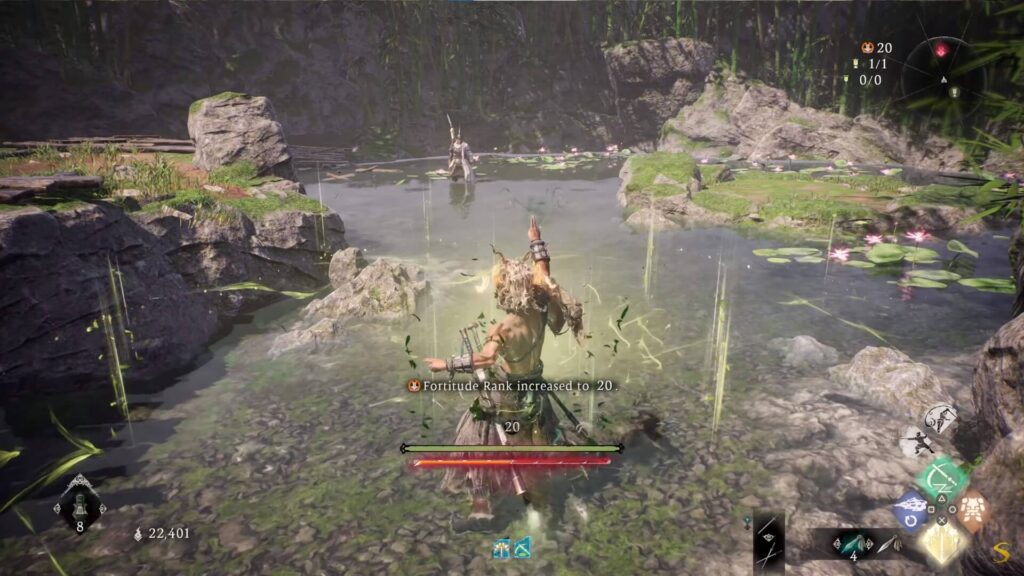
And if you want to win by hard work, you can set your own challenges. Wo Long: Fallen Dynasty features a morale system (Bravery ranks) which is almost optional in some levels. When you enter a new battlefield, you start off with zero morale, which gradually increases as you kill enemies or plant your flag. Each enemy also has its own morale level. The higher their morale compared to yours, the more likely they are to hurt you badly and quickly break down your structure, while increasing their resistance to your attacks.
This mechanic is perfectly conceived, as it is ideally suited to the war context, where the notion of morale is very important, but also because it forces us to take risks and explore every inch of the different maps, which feature a decent level-design that brings more open space and verticality than in Nioh.
Finding the various places to place our flag in order to increase our morale gives a real dimension to exploration, far more than simple chests filled with loot. And it’s essential, too, since each time you die, your morale will drop to a limited level, determined by the number of flags you’ve placed. In other words, it’s best not to go head-to-head with a boss if your morale isn’t high enough, as they’ll quickly break your spirit.
A Title Made to Eat the Wolf
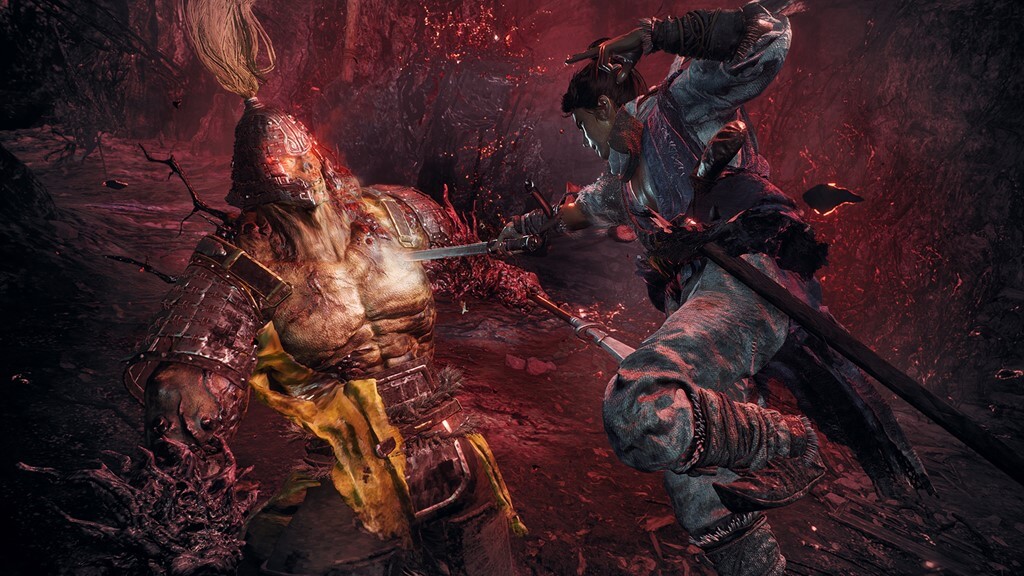
Wo Long: Fallen Dynasty regularly shows us that it wants to force us to be daredevils. Its entire combat system is based on aggression and risk-taking, as if it had fully digested Sekiro’s legacy while adding a less mechanical feel. Whereas From Software’s title was like a Swiss cuckoo clock, with the choreography of certain bosses looking like a rhythm game, Team Ninja’s game is a little looser, almost more about improvisation apart from a few rare moments. And that’s thanks to the RPG part of the game, which allows far more freedom than Sekiro, since you’ll have dozens of weapon types at your disposal, each offering special martial arts moves, as well as magic to be used with care.
And Wo Long doesn’t bother with stamina, swapping it for a spirit gauge. The latter is placed under your life bar, and acts like a scale that you must always try to tip to the right side. In short, you’ll be totally free to perform unrestricted series of moves, which will tip this gauge into the positive (represented by a blue part), but every powerful attack, sorcery, or block will send it back down into the negative (the orange part).
Finding the perfect balance in this gauge therefore requires a strong attacking streak rather than the usual wait-and-see attitude of games of this genre. Here, you must not give the enemy time to breathe, in order to interrupt his patterns and raise his stun gauge, which will eventually trigger a powerful attack, this applies to bosses even more, although you’ll need to play a little more with dodging and counter-attacks, as some of the enemy’s attacks are unstoppable (indicated by a red aura).
This is where you’ll see another legacy of Sekiro (or rather, Stranger of Paradise: Final Fantasy Origins from the same studio), as you’ll have a “perfect” parry, which deflects all attacks if used at the right moment. It takes a certain amount of muscular effort to get the hang of it, which isn’t helped by the fact that the perfect parry button is different from the traditional parry button, but is the same as the dodge button (press twice to dodge). In other words, if you’re trigger-happy, you’ll be doing a lot of unintentional flipping, and death will come to punish you for being more precise.
The mechanics are obviously much less refined than they are in Sekiro, but when you find the right tempo, Wo Long: Fallen Dynasty is all the more enjoyable. The controller’s sensations are exhilarating, supported by martial arts choreography that gives you a real sense of power. Countering a normally unstoppable boss attack at the right moment to send him flying in style makes you feel like you could take on the Three Kingdoms all by yourself.
Find Your Animal Totem
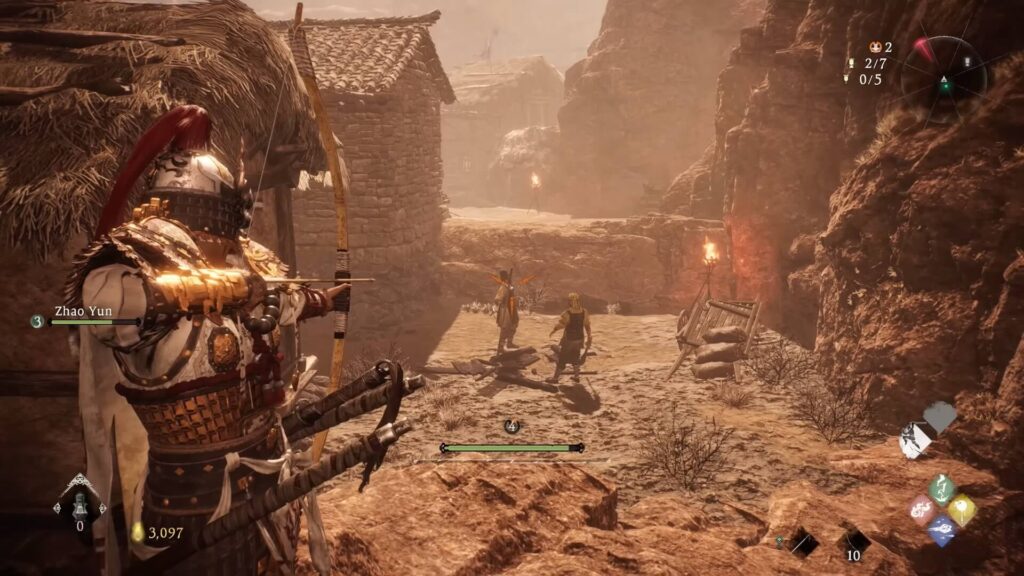
And if the power of our blade isn’t enough, we can call on a spirit whose system is a direct evolution of what we found in Nioh. Your totem animal (a tiger, a phoenix, a snake, or others that we’ll let you discover) can be summoned on the battlefield, usually for the duration of an attack only, or infused into your weapon to grant it certain properties, such as elements (fire, ice, etc.).
The game also plays with these elements in a rock-paper-scissors system to inflict more damage through elemental reactions. Not enough to transform the experience into a Genshin Impact, but casting an ice spell on an enemy whose blade is impregnated with fire could, for example, stop his enchantment. It’s a pity, however, that the mechanics are not really exploited for 90% of the adventure, which doesn’t really encourage you to specialize in one magical path rather than another.
There are five talent trees that unlock spells of various types, but these trees are linked to the way in which you progress your hero. As you level up, you’ll be able to increase the characteristics you want by investing in one of the five domains, also known as Virtues (of Fire, Wood, Water, Earth, and Metal), which replace the usual Vitality, Endurance, Strength, and company.
Progression is therefore a little more blurred, since you won’t be able to unlock advanced ice spells, for example, if you don’t wish to invest your level points in the Water branch, boosting your stealth (which seems far less essential than the Wood virtue, for example, which boosts your vitality). Especially since stealth has little meaning here, as the enemy AI ( or allies’ AI) is in another world, unable to hear anything and totally short-sighted. We wouldn’t have said no to a clearer system, even if the game wanted to stand out from its predecessors.
Plus it’s Long…
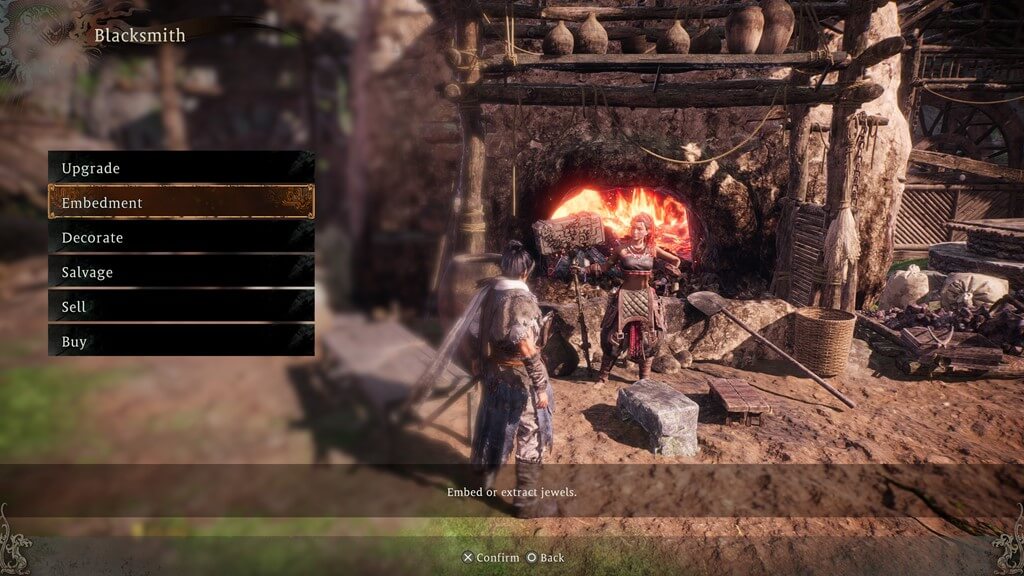
Fortunately, it’s possible to catch up halfway through the game if you’ve misunderstood the system or want to switch to another build. You soon unlock access to a village that serves as a HUB, with a blacksmith and an old master who will allow you to reallocate your skills. This village can be reached at any time by finding a main war flag (basically, a campfire), which gives access to a world map on which you can trigger side missions.
These will take us back to the main mission maps, but in a new light, with tighter zones and more enemies to fight for rewards and to make our character more powerful if we get stuck on a tough boss. This adds to the game’s lifespan, even if it’s a shame that these quests end very quickly and tend to recycle scenery, despite the title’s intention to make us travel frequently.
This period allows Team Ninja to offer several biomes quite naturally, with an artistic direction that makes its effect. It’s not always well served by the graphics engine, which sometimes displays scenery with little detail or elements that flicker too much, but there are still some lovely panoramas to admire. The studio still hasn’t made the transition to the new generation, which can be seen regularly without really tarnishing the experience. Particularly in Performance mode, where we’re delighted to have a stable 60 fps on PS5 that only shakes on very rare occasions, in enclosed spaces.
These enclosed spaces also bring out the worst in Wo Long, and more generally in all other titles in the genre. The game is no exception to the curse of the cursed camera, which panics as soon as you approach a wall, quickly rendering the action meaningless. This is particularly the case with this game, given that basic legibility is not its strong point. Team Ninja has overdone the effects, with particles, explosions, and auras all over the place, making the screen far too busy, so that it’s sometimes hard to read your own character’s movements. Suffice to say, this doesn’t help much when it comes to reading enemy patterns, making for a frustrating learning curve. A frustration that doesn’t entirely erase the pleasure of a well-placed counter, as Wo Long remains effective over time with admirable consistency.
Conclusion
Wo Long: Fallen Dynasty doesn’t reinvent the wheel, but it offers enough refinement to establish itself as one of the new leaders in the genre. More accessible than Nioh without sacrificing a large dose of challenge, the title seems to have digested the heritage of several of its predecessors to refine a winning formula. It’s edgy, dynamic, demanding, and oozing with style, with a well-chosen historical setting that justifies some very interesting new gameplay features. However, there are still a few glitches and inaccuracies that could be corrected in a sequel we’re already hoping for, even if the studio is limited by the historical period it’s set in. Wo Long: Fallen Dynasty is undoubtedly a new license worth counting on.
